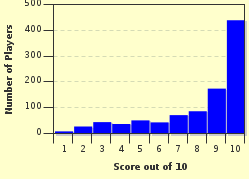Quiz Answer Key and Fun Facts
1. Republic of Burundi is a small landlocked country in east central Africa, bordering Rwanda, Tanzania, and the Democratic Republic of the Congo.
From which country did Burundi claim its independence on July 1st, 1962?
2. The original inhabitants of present-day Burundi belonged to three tribes who occupied the land and began the formation of the country 500 years ago.
The tribes were the Tutsi, the Hutu and the ___?
3. Burundi lies in the Great Lakes region of Eastern Africa and more than a half of its southwestern border is adjacent to this lake which is the second largest freshwater lake in the world by volume and also the second deepest.
Which African lake are we talking about?
4. Burundi has a tropical highland climate and is a hilly and mountainous country with a plateau in its eastern part and some plains along the shore of Lake Tanganyika.
Which is Burundi's highest mountain?
5. Bujumbura is a populous and most industrialized city where one can find the presidential palace, the national stadium, a few museums, a national park, a mosque, a cathedral, a university and a large market.
Where is Bujumbura located?
6. The capital of the kingdom, ____ , lies to the east of Bujumbura. What is the name of this city?
7. In the southeastern part of Burundi, in the Rutana province, we can admire one of the country's most exceptional natural features - The Chutes de la Kagera. This 'landmark' occupies over 142 hectares and in 2007 was submitted to the UNESCO World Heritage Tentative List.
What are The Chutes de la Kagera?
8. Burundi's history is characterized by rebellions, coups, killings and corruption in a long-term strife of the Hutu and Tutsi tribes to accede to power.
In 1992 a new constitution was established and, finally, in 1993 the first democratic election took place and was won by the leader of the Front for Democracy in Burundi (FRODEBU).
His name was? [think "three wise men"]
9. Burundi has one of the lowest gross national products, being among the poorest countries in the world. Burundi's largest industry is agriculture which accounts for more than 50% of the country's gross domestic product (GDP). There is a severe trade imbalance as the country imports twice as much as it exports.
What is Burundi's primary export crop?
10. Now we know that Burundi is a small and very poor country, whose population bases its existence and survival on farming various crops. But it is also a country of wonderful landscapes (from mountaintops to forests and huge lakes to tropical plateau), fascinating wildlife, a rich cultural patchwork and many more other tourist attractions. We decide that Burundi is a 'must see' and we start planning our next vacation.
I guess the first question (and the last of this quiz) to ask is:
Does Burundi have an international airport?
Source: Author
denni19
This quiz was reviewed by FunTrivia editor
ozzz2002 before going online.
Any errors found in FunTrivia content are routinely corrected through our feedback system.
